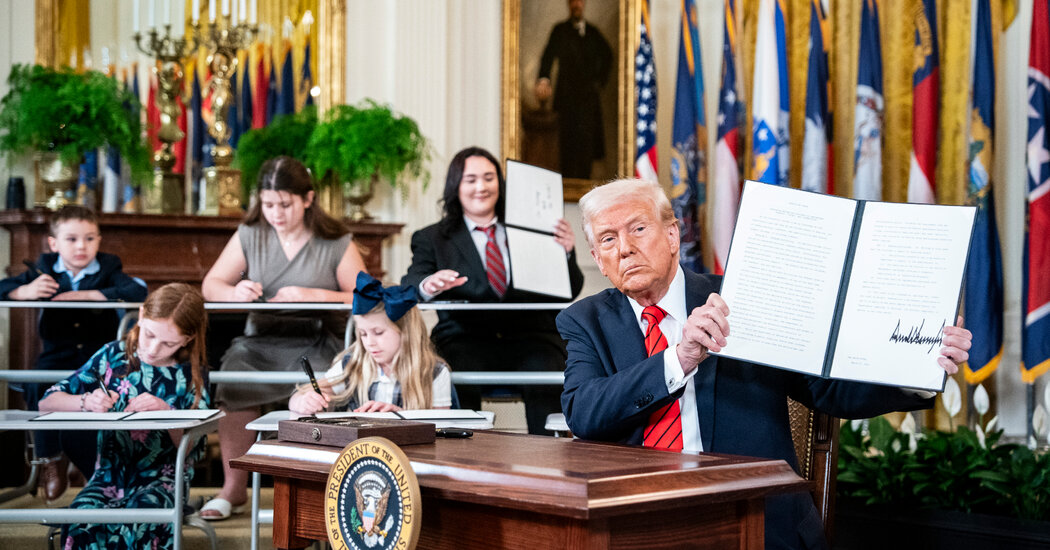Trump’s Stance on the Education Department
Throughout his political career, former President Donald Trump has expressed a desire to dissolve the Department of Education, although this issue was never a primary focus during his three campaigns for the White House. His rationale for dismantling the agency has remained remarkably consistent over the years. In 2015, just a few months into his candidacy, Mr. Trump proclaimed, “Move it back to the states.” Fast forward to the closing days of the 2024 election campaign, he reiterated this sentiment to his supporters, declaring, “Your state is going to control your children’s education.”
Despite Mr. Trump’s assertions, the federal government has historically had limited control over education, primarily responsible for administering college loans and enforcing civil rights protections within schools. Nevertheless, during a significant campaign event, he invoked the back-to-the-states mantra yet again when he signed an executive order on March 20 aimed at closing the Department of Education. The order was aptly titled: “Improving Education Outcomes by Empowering Parents, States, and Communities.”
This strategy of decentralizing power has long been a hallmark of conservative politicians advocating for a smaller federal footprint and increased local authority. It has now become a foundational principle of Trump’s second administration, influencing a wide array of policy areas, including abortion rights, regulatory cuts, and tariff increases. However, it’s crucial to recognize that states may not be adequately equipped to assume the regulatory responsibilities that the federal government has traditionally managed, especially in educational matters.
During the 2024 presidential race, Mr. Trump utilized this tactic to evade direct questions about abortion rights, asserting that the decision should be left to individual states. This approach seemed particularly audacious given that he had appointed a number of conservative judges to the Supreme Court, which ultimately led to the overturning of Roe v. Wade.
More recently, Trump and members of his administration have also advocated for the elimination of the Federal Emergency Management Agency (FEMA), arguing that state governments could handle disaster relief more effectively. This perspective appears to overlook the agency’s fundamental principle, which emphasizes that the most effective disaster response is one that is “locally executed, state managed, and federally supported.”




